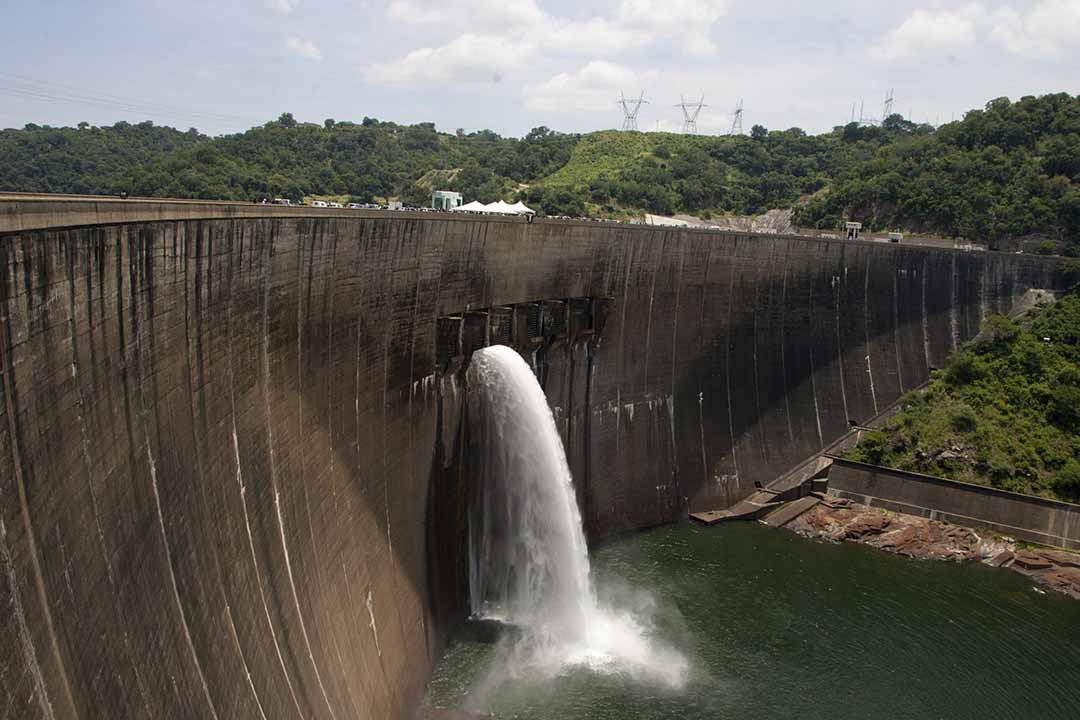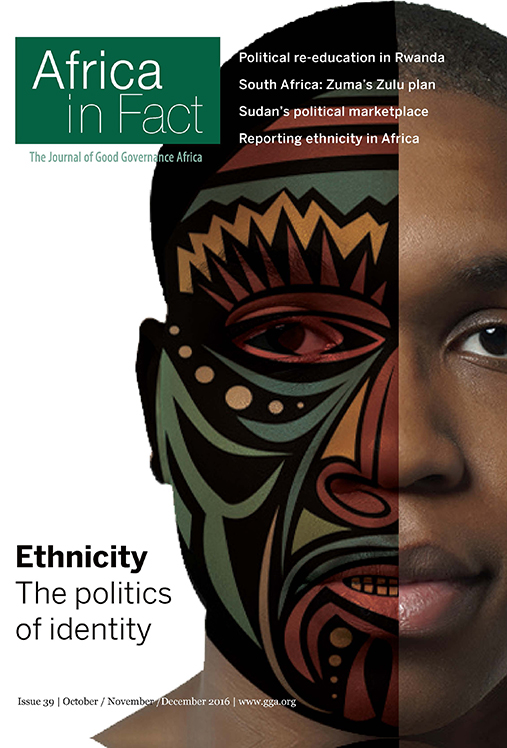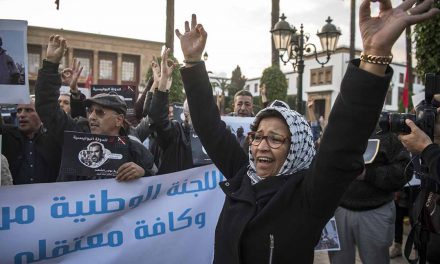SDG 7: affordable and clean energy
Africa is making progress with efforts to provide people with electricity, but much more needs to be done to advance the use of cleaner cooking

The Kariba Dam on the border between Zambia and Zimbabwe supplies 1,626 megawatts of electricity to parts of both countries. Photo: JEKESAI NJIKIZANA / AFP
By Joe Walsh
As a whole, Africa has struggled to make serious progress towards Sustainable Development Goal (SDG) 7, affordable and clean energy. Of the continent’s 55 countries 39 have made less than 50% progress towards their 2030 target from their 2010 baseline, according to the 2018 Africa SDG Index, with the report calling it a big challenge that needs to be prioritised. The remaining countries had not achieved the affordable and clean energy target, but it remains possible if significant action is taken. Not one country had achieved the goal as yet, though the North African countries were significantly closer. One indicator of just how crucial access to energy is seen for the continent, the African Development Bank (AfDB) made energy its top development priority in 2016. The bank argued that the continent should strive to achieve universal access for all by 2025 – five years in advance of the 2030 deadline. To help achieve its ambitious deadline, the bank says it is revisiting the size and scope of the loans it provides. “Following that prioritisation, we have quite significantly expanded, not only the volume of lending but also the scope of areas that we try and provide solutions for, particularly new decentralised energy solutions,” Daniel Schroth, principal energy specialist in the energy, environment and climate change department at AfDB, told Africa in Fact. Certainly, the continent is starting to make progress as regards electricity provision. For example, in sub-Saharan Africa access to electricity has overtaken population growth for the first time.
In 2016, the number of people without access to electricity in the region fell for the first time by 28.5 million, according to the 2018 Energy Progress Report by the World Health Organisation (WHO), the World Bank, the International Energy Agency (IEA) and the International Renewable Energy Agency (IRENA). Yet there is still some way to go. Across the continent, only 43% of the population has access to electricity, leaving approximately 566.8 million people with none. There is, however, near total coverage in the North Africa region. Kenya and Ethiopia are countries that have made strong progress towards achieving electricity access, expanding access to their populations by more than five percentage points per annum from 2014-16. Tanzania’s energy access grew from 19% to 33% over the same period. Schroth puts this down to the political will of those countries, which have prioritised access to electricity and followed through with plans to make it happen. This includes governments putting in place appropriate enabling environments for the private sector. However, access to electricity and the introduction of policies to address it are very uneven across the continent. Central Africa, for example, has seen very little progress, as it is starting from a low base and has very little infrastructure already in place. With solar prices falling due to demand in the West and rising supply in China, there is great potential for diversified grids across Africa to help address SDG 7. This is particularly the case in rural communities that have never enjoyed the benefits of national grid infrastructure. Basically, diversified grids eliminate the need to depend on an extensive, centralised national grid. New companies are emerging, bringing with them new ways of paying for electricity.
For example, US-based start-up Zola Electric installs solar systems in homes across several African countries on a payment model that allows customers to pay on a monthly basis. By eliminating the upfront cost of solar, Zola Electric has been able to provide a clean, affordable, more widely useful and therefore popular alternative fuel source to kerosene, a widely used source of light in Africa. The company is getting lights on in more than 50,000 new homes each month in Tanzania, Rwanda, Côte d’Ivoire, Ghana and Nigeria. Other start-ups backed by US venture capital – companies like M-Kopa, d.light, Solar Now, Andela Fenix and Black Star among them – are operating on a similar model (in addition, Black Star constructs mini-grids). The start-ups are also attracting considerable investor attention from western venture capitalists, with Andela raising $100 million from Al Gore’s Generation Investment Management earlier this year, for example. This development is seeing the private sector moving to address infrastructure provision that was traditionally believed to be a responsibility of government. Electrifying rural Africa may not need to be as costly as building centralised national grid infrastructures. These new technologies and finance models available didn’t exist when the countries of the West developed their own public utilities, says John Tcakic, head of energy information and analytics at clean energy financing organisation Renewable Energy and Energy Efficiency Partnership (REEEP). Africa, in effect, will benefit from these more diversified power options. “There’s the potential to leapfrog the West as Africa did with the telecoms system and skipped the expensive landline infrastructure step,” he told Africa in Fact.
However, increasing access to clean energy and improving the renewable energy mix are only two of the four sub-goals of SDG 7. The SDG also envisages doubling the rate of energy efficiency and advancing the use of cleaner cooking fuels. Significantly less progress has been made in addressing these two items, particularly with regard to cleaner cooking fuels, Schroth notes. Between 2014 and 2016, population growth outstripped the number of people gaining access to clean cooking technologies by four to one, according to the 2018 Energy Progress report. In Chad, Mauritania and Madagascar access to clean cooking is actually falling. And Tanzania’s rate of access to clean cooking fuels has remained steady at 2% of the population, despite the country’s progress on clean energy access, perhaps highlighting how this aspect of SDG 7 is less of a political priority there. The challenges of addressing the need for clean cooking has also not attracted ambitious start-ups, as is the case with electricity provision. While some initiatives are underway, clean cooking has simply not been getting the political attention that it deserves, says Schroth. “The AfDB has now started looking at those issues, but the private sector companies to finance them aren’t there.” Energy efficiency is another area that does not appear to attract the same political attention as in other parts of the world, where the cost savings element of energy efficiency has galvanised efforts, according to Schroth. “Energy efficiency is an opportunity that has not been fully seized,” he adds. But despite the challenges, there is progress towards meeting SDG 7 on the continent. The Africa 2018 SDG report notes that seven countries are on target to meet the 2030 access to electricity goal, while a further five are already there.
A further 11 are making moderate progress on this indicator, just not enough to reach the target, while only three are moving in the wrong direction for energy access. “We need to do more… to meet all SDG 7 targets. I am particularly concerned by the dramatic lack of access to reliable, modern and sustainable energy… in sub-Saharan Africa, a region where we need to really concentrate our efforts,” says Dr Fatih Birol, executive director at the IEA, highlighting the need for action and the organisation’s desire to realise that. This is matched by the AfDB’s decision to elevate energy to its top priority.
Joe Walsh is a freelance journalist based in Johannesburg. He writes about the environment, energy and the green economy as well as politics and society for British publications, including Environmental Finance, the New Statesman and The New European.












